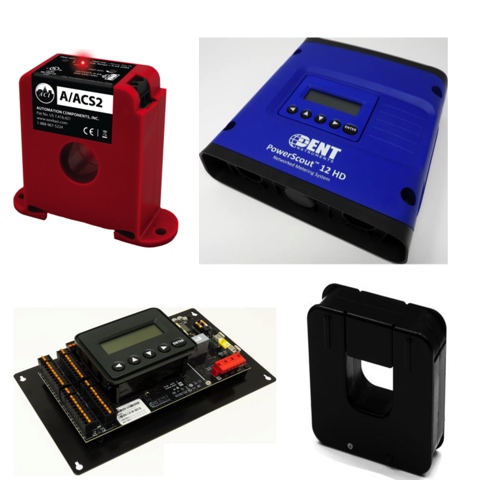Current Sensors

RSP Supply carries a complete line of electrical current sensors engineered for precise, real-time measurement in power monitoring, motor control, energy management, and automation applications. Each current sensing device is designed to measure electrical current safely and accurately without direct contact with high-voltage conductors, helping protect equipment and personnel in demanding industrial environments.
Current sensors operate by detecting the magnetic field generated by current flow and converting it into a usable signal for control and monitoring systems. Hall Effect current measurement sensors are among the most widely used solutions and are available in open-loop and closed-loop designs. Open-loop sensors provide efficient and cost-effective current sensing, while closed-loop devices offer enhanced accuracy, linearity, and stability for high-performance applications such as power supplies, EV charging systems, and precision energy monitoring.
In applications requiring electrical isolation, such as high-voltage installations or sensitive control circuits, current sensing devices help prevent circuit interference while maintaining measurement accuracy. Their ability to measure both AC and DC currents makes electrical current sensors essential for diagnostics, predictive maintenance, and system optimization across industrial and commercial electrical systems.
FAQs
Q: What is a current sensor?
A current sensor measures the electrical current flowing through a conductor without interrupting the circuit, converting that current into an electrical signal for monitoring and control.
Q: What are current sensors used for?
They are used in motor control, load monitoring, energy management, and equipment protection across automation, industrial, and commercial systems.
Q: What factors should be considered when selecting a current sensor for an electrical system?
Choosing a current sensor involves evaluating the type of current being measured (AC, DC, or both), expected current range, required accuracy, and frequency response. Other considerations include electrical isolation needs, operating environment, physical size constraints, and system integration requirements.
Q: How accurate are current sensors?
Most industrial current sensors have accuracies ranging from ±0.5% to ±2%, depending on type, installation, and calibration.
Q: Do current sensors require maintenance or calibration?
They typically require little maintenance, but periodic calibration and inspection ensure continued precision and prevent measurement drift.
Why Buy Current Sensors from RSP Supply
RSP Supply provides high-quality current sensors from leading brands, available with fast shipping and expert technical support. Our selection includes Hall Effect, transformer, and split-core models for every application; from power monitoring to motor control. Count on RSP Supply for dependable measurement solutions that improve efficiency, accuracy, and system protection in your electrical installations.

